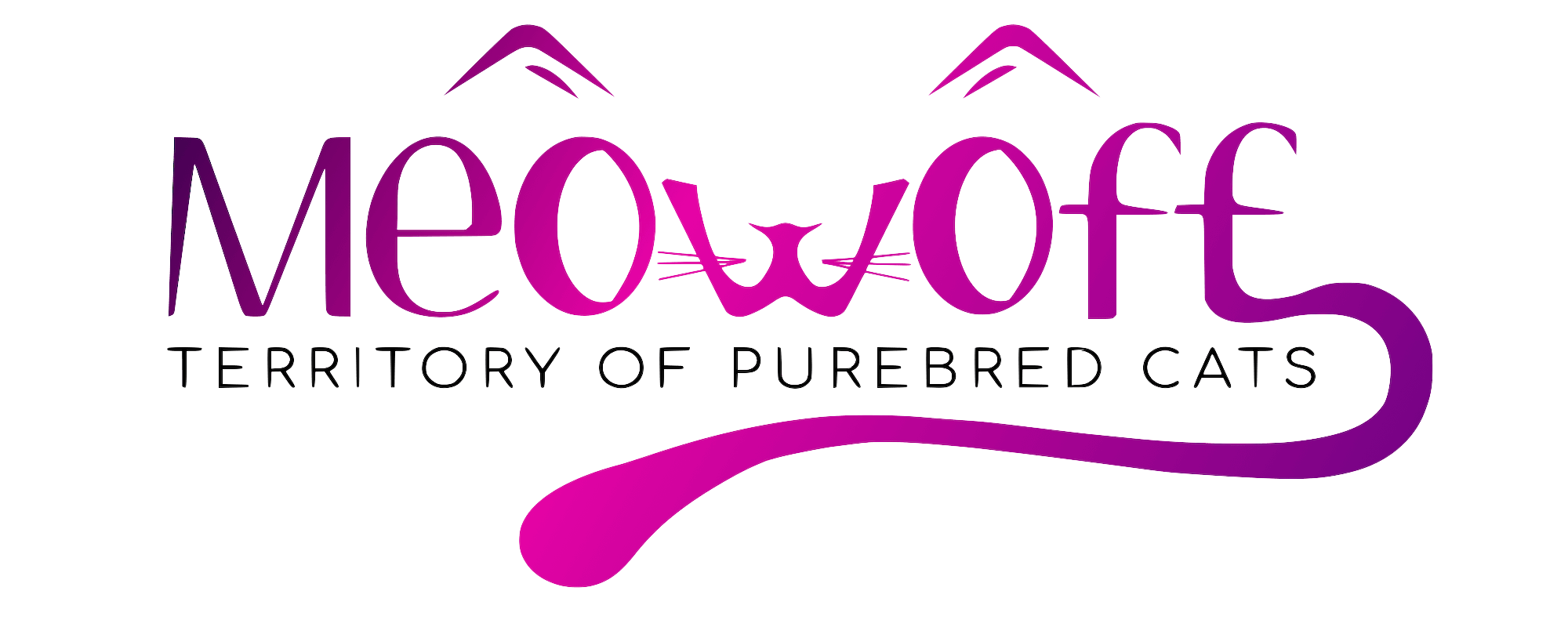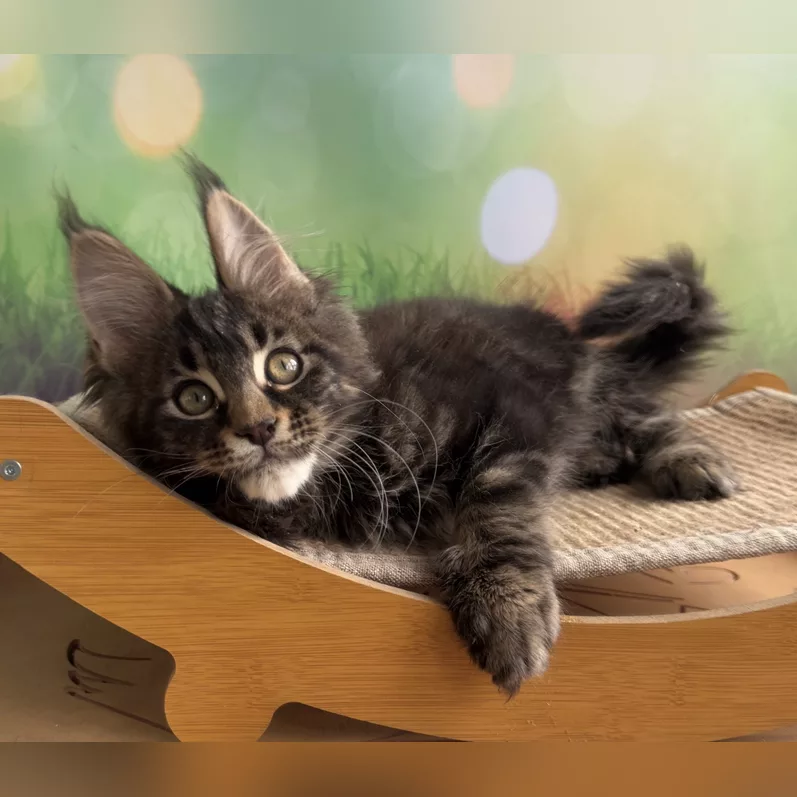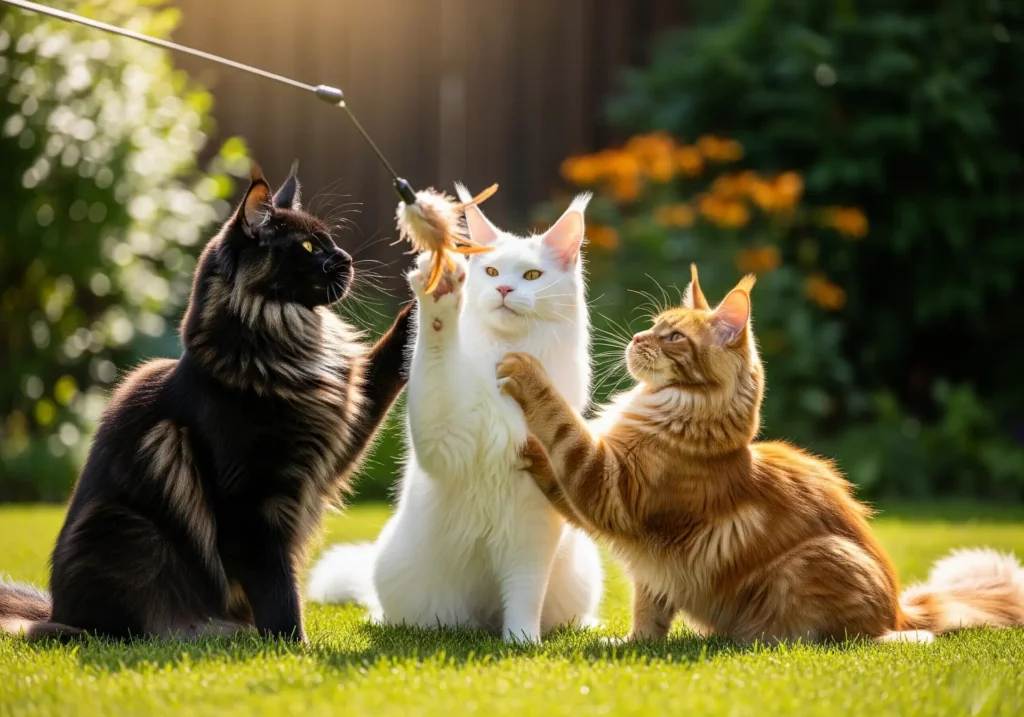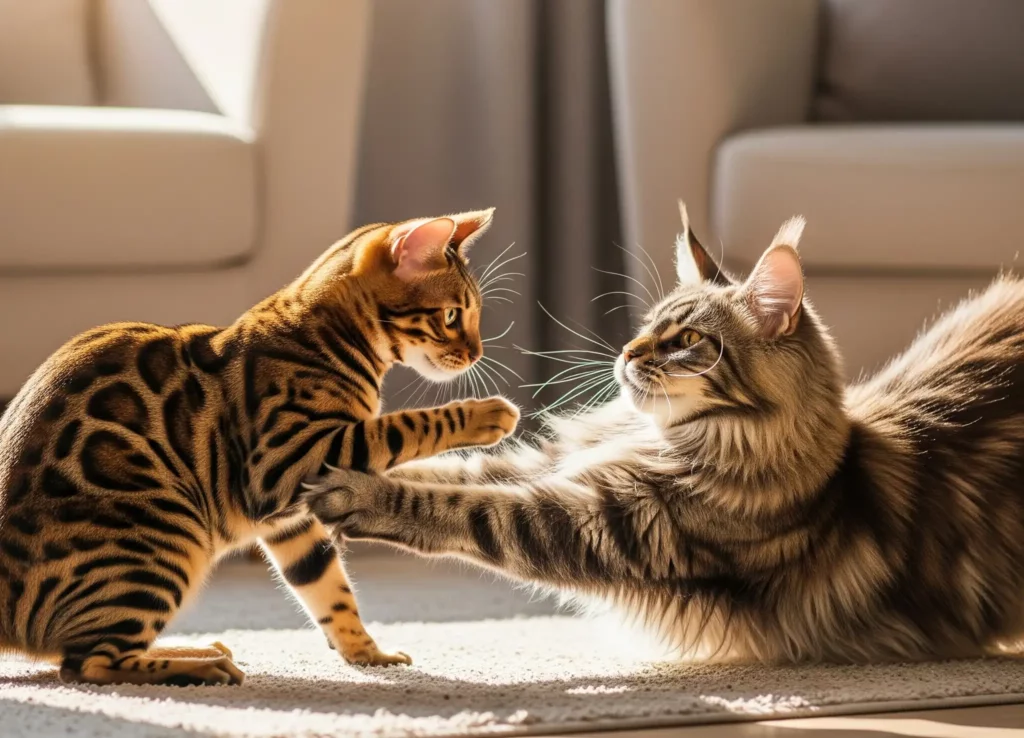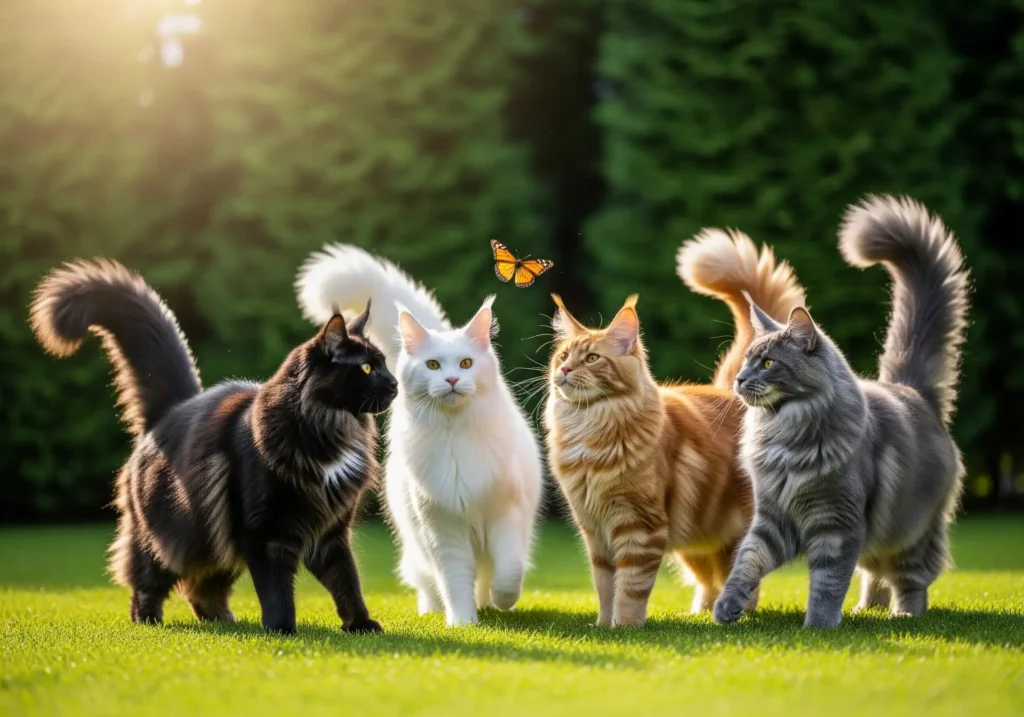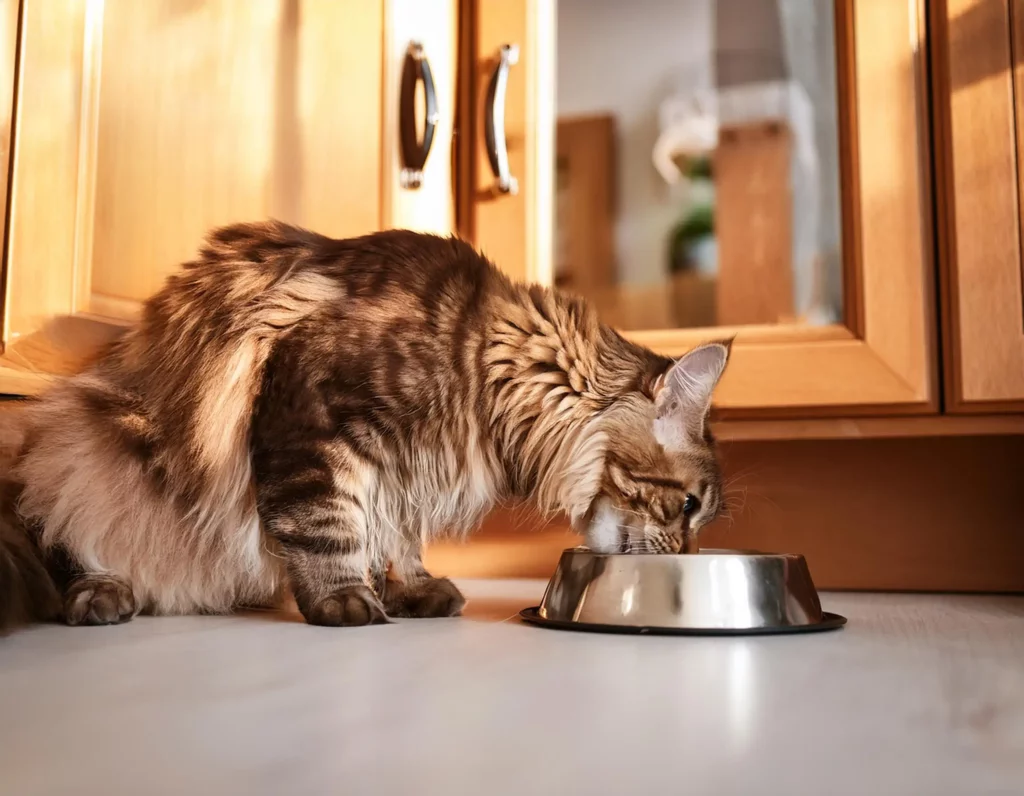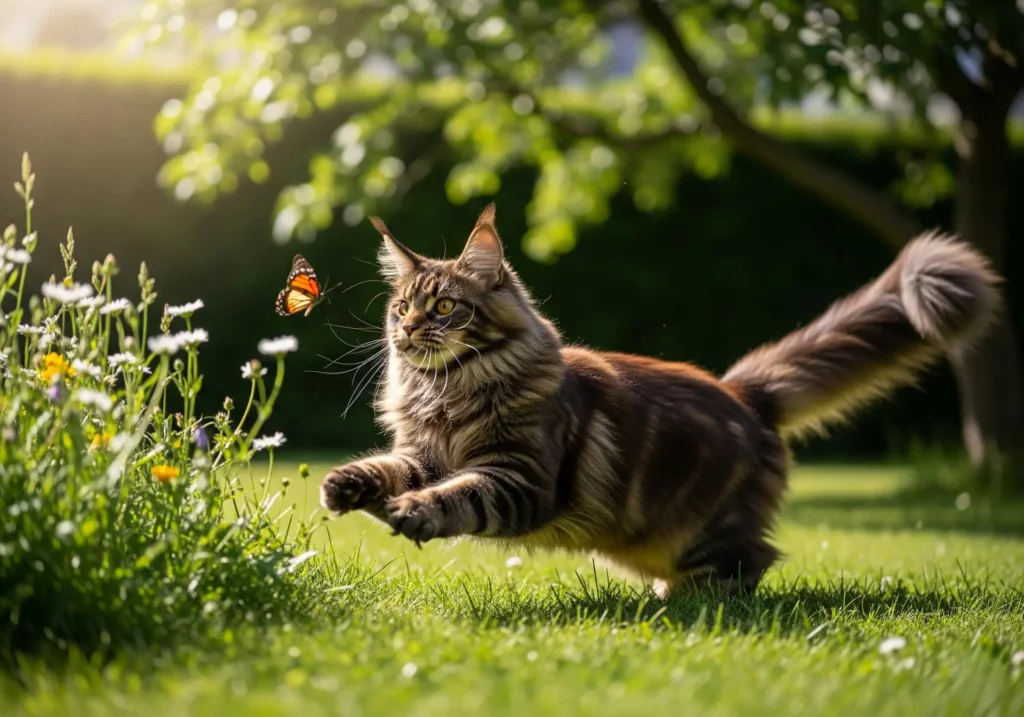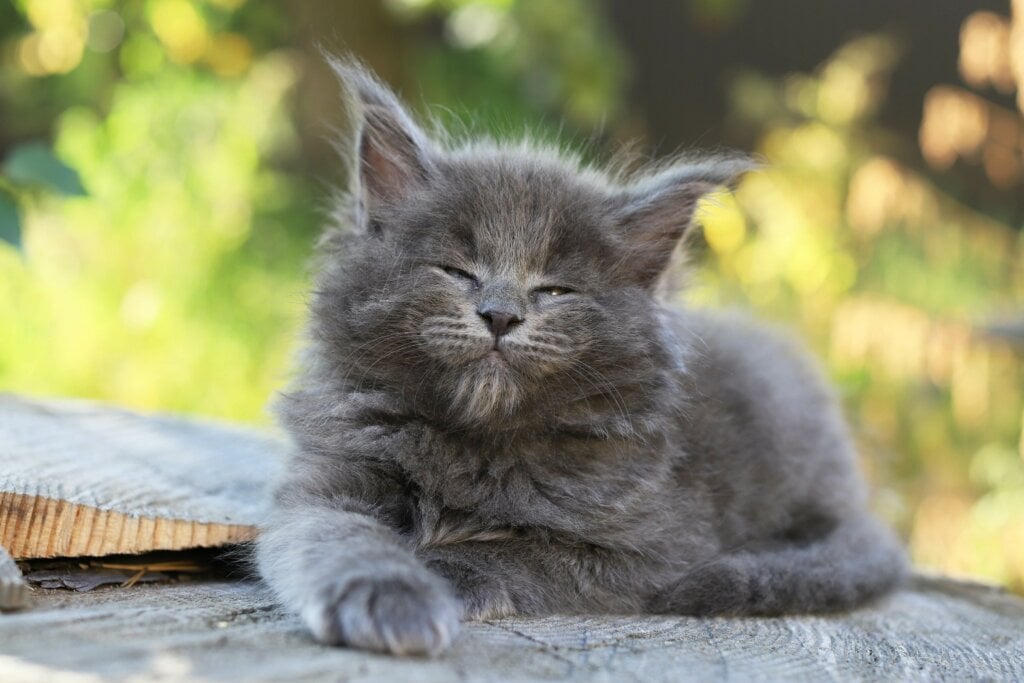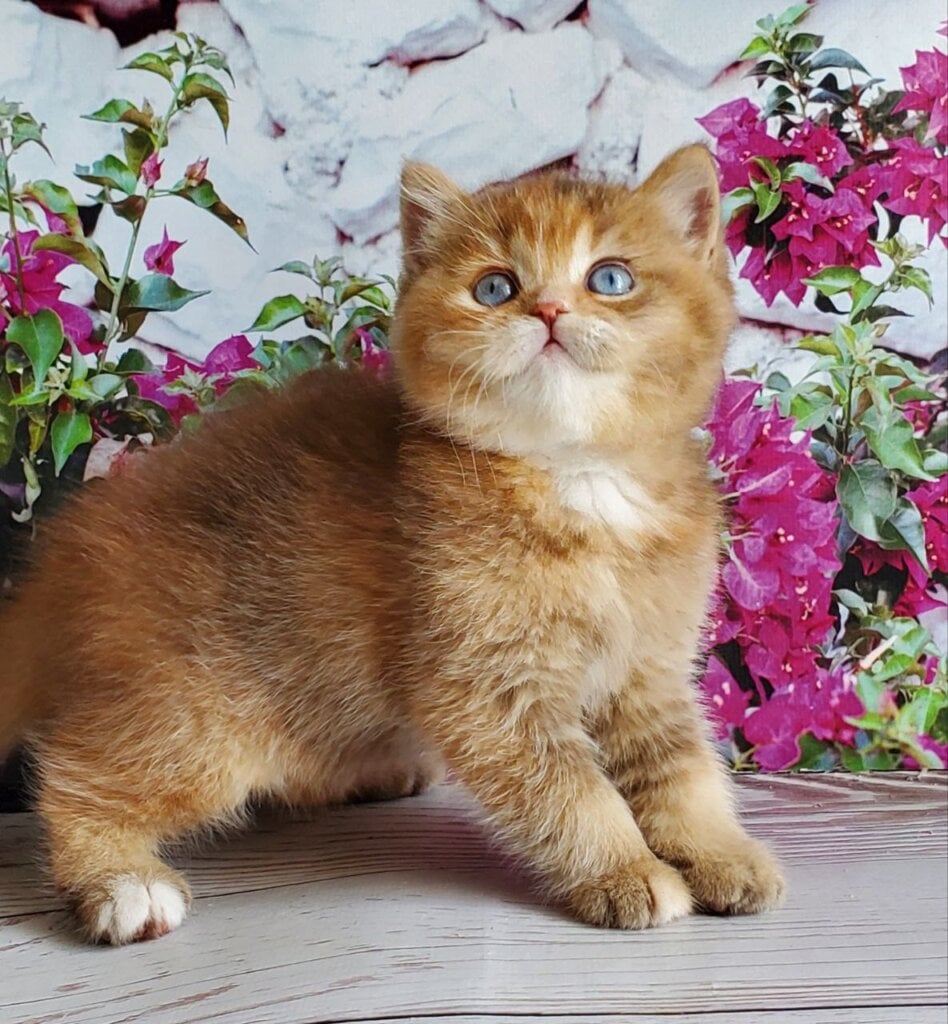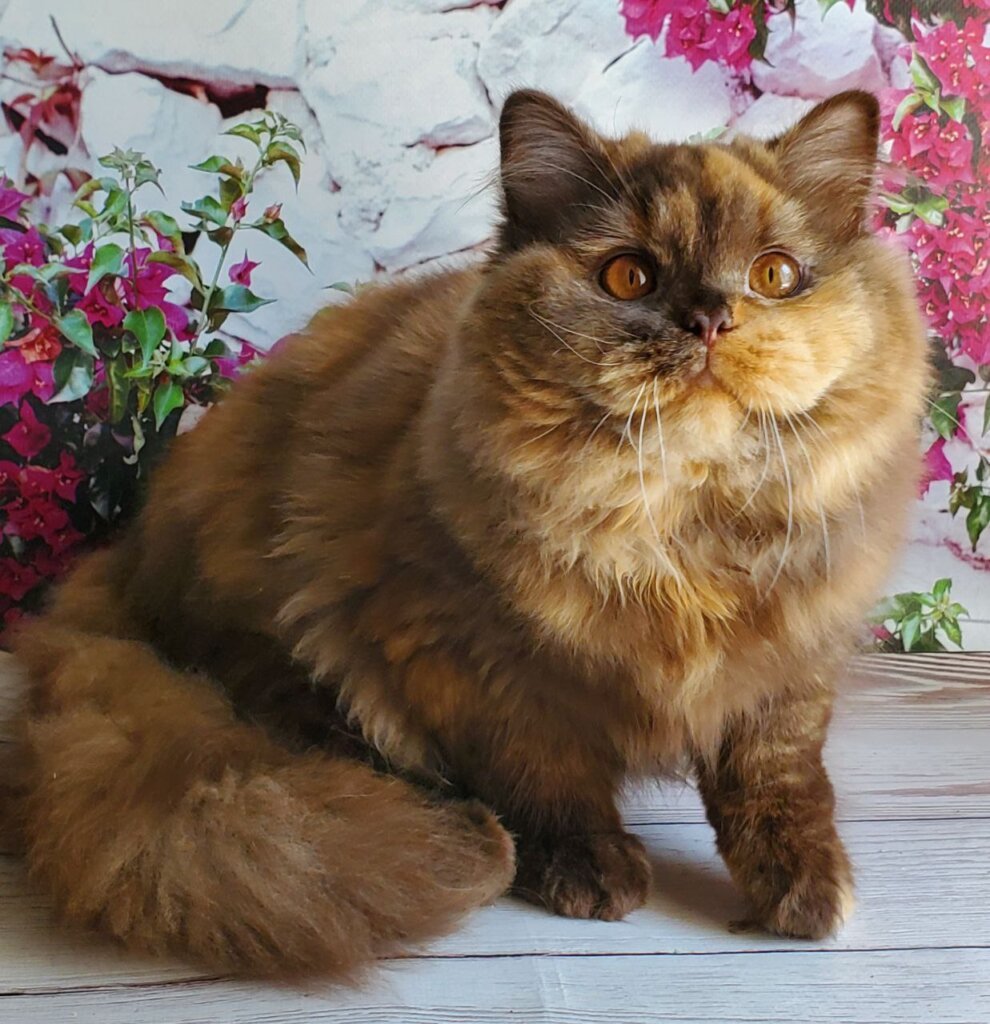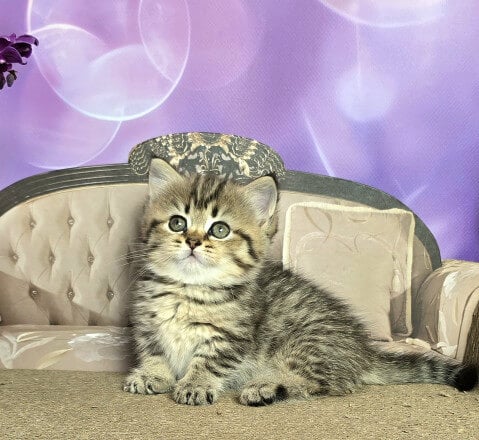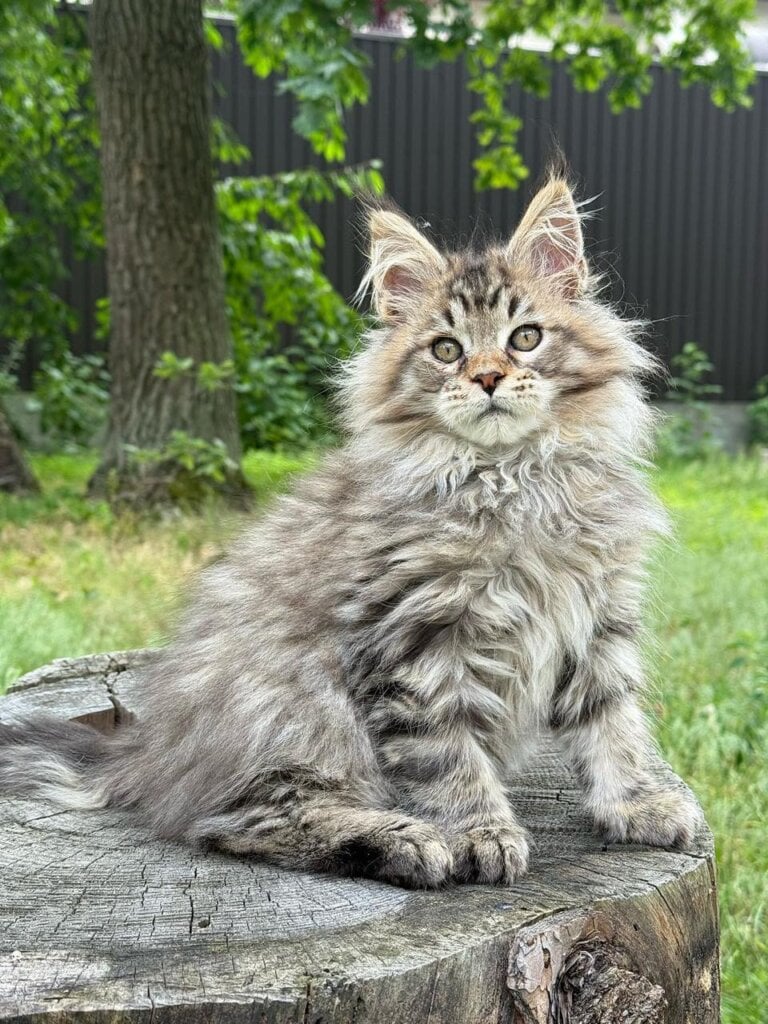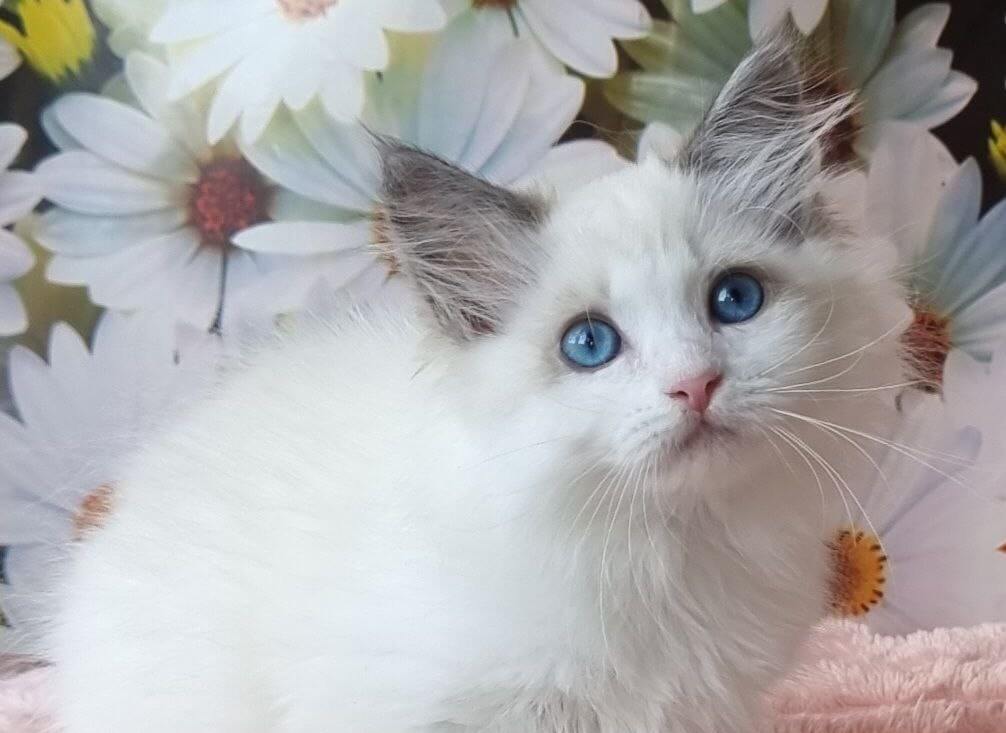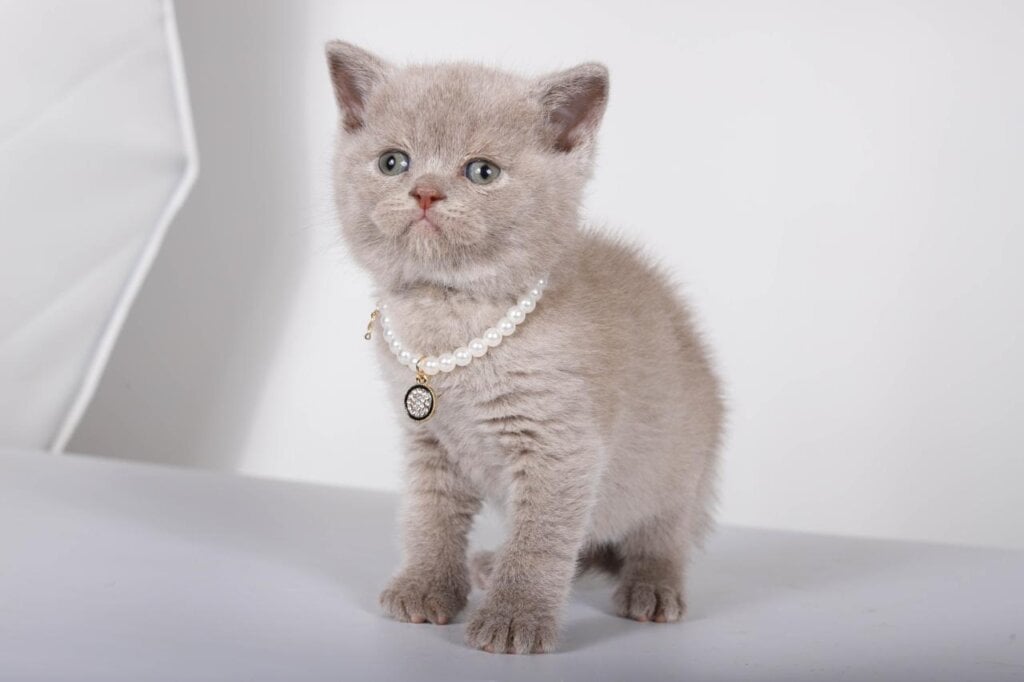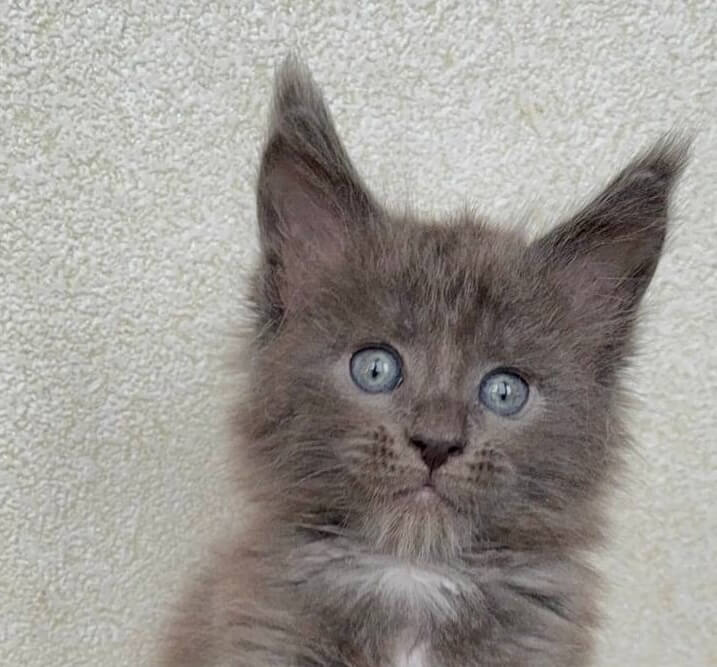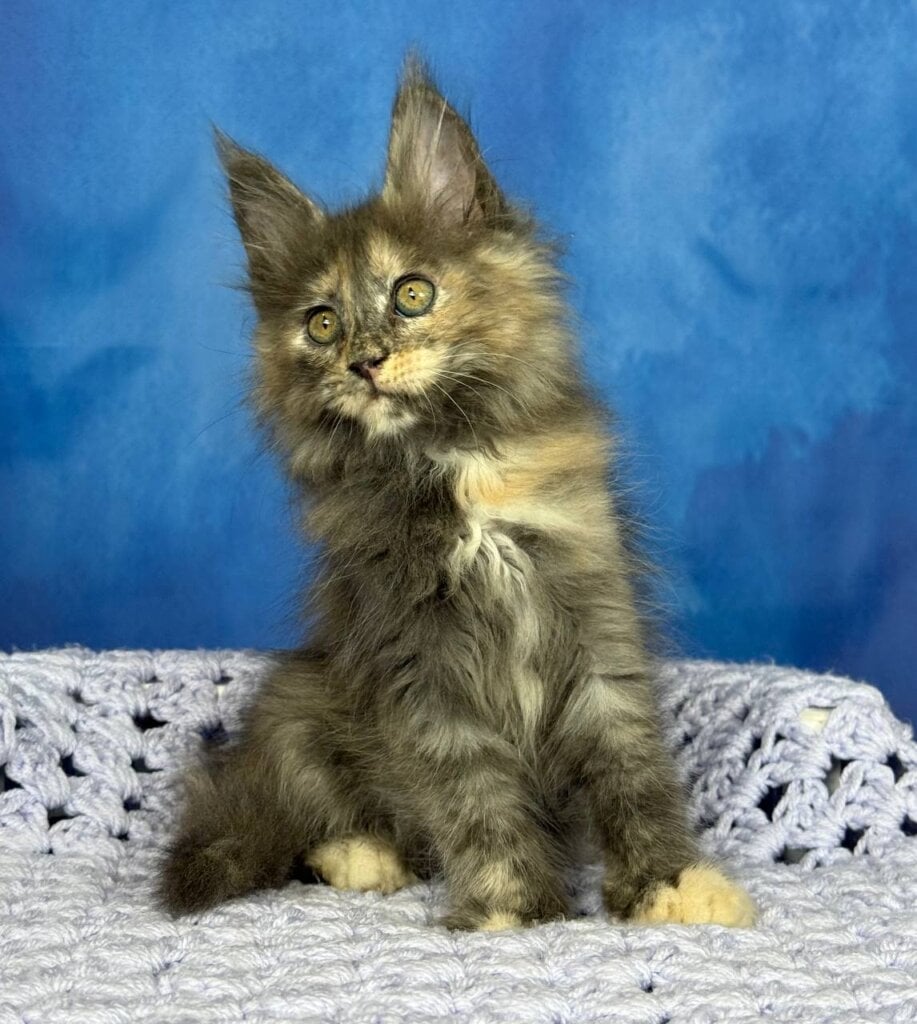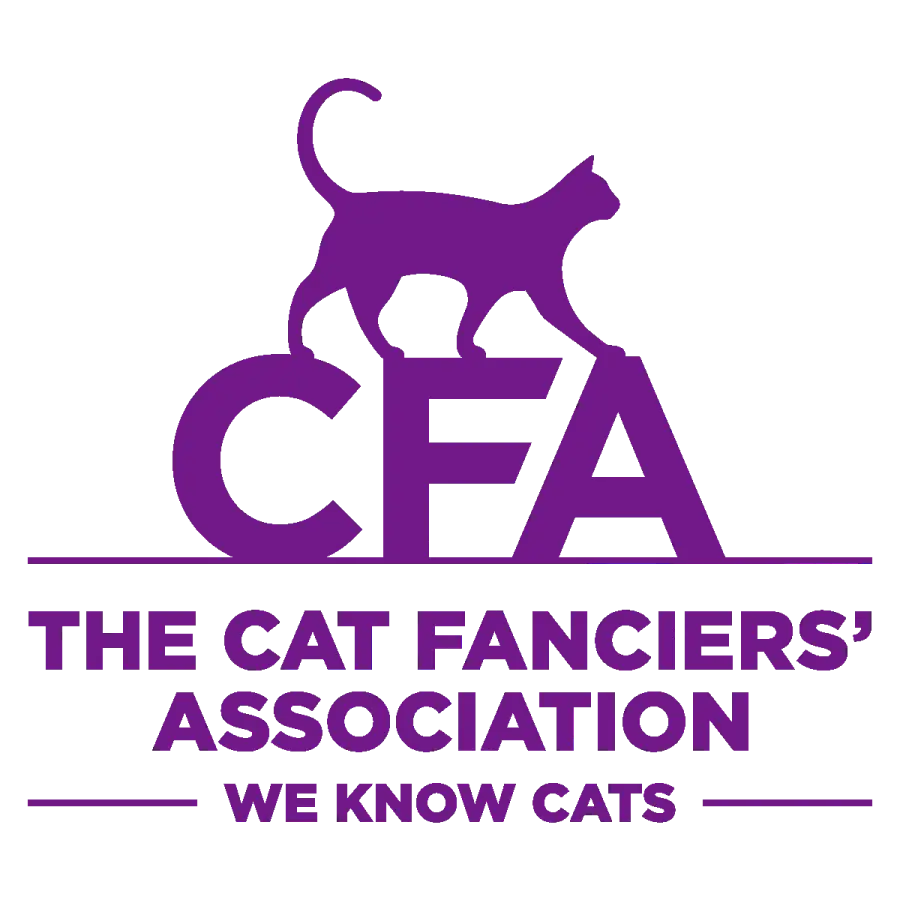Maine Coon Coat Features
Maine Coons are well known for their flowing coats, characterized by long, soft fur. This unique feature contributes to their majestic beauty, but is also practical. Of course, historically, their long and shaggy coat was crucial in keeping them warm during the bitter cold winters, protecting them from rain and snow.
This fur is far from one homogenous layer. With age, Maine Coons acquire a protective coat and guard hairs, creating an intricate and interesting fur coat. Even when they’re kittens, their short hair begins to grow out and thicken. This slow alteration quickly turns them into the cascading coats that characterize the breed.
Usually, it takes 3 to 4 years for shorthair kittens to grow into this legendary look.
Fur Texture and Patterns
The texture of a Maine Coon’s fur is usually silky, but there’s a wide variation among cats. Some are more plush, some are particularly silky, making them all the more mesmerizingly varied. The most prevalent color patterns are tabby, solid, and bicolor. Each pattern has its own individual charm.
For example, the distinct tabby pattern can vary from traditional classics to less defined stripes, adding depth and intrigue. Genetic factors have a significant impact on these patterns. Lineage is a major factor in how each cat looks, and that’s where the fun begins.
The appearance of stripes, swirls, and other patterns and textures isn’t simply a product of the genetic lottery at work. It’s a wonderful look into feline ancestry.
Common Colors and Markings
Coloring Maine Coons show off the full range of colors for cats, but black, brown tabby, and cream are among the most common colors found in the breed. These rich colors do more than make a stunning appearance, they contribute to each cat’s unique personality.
Stripes and spots are key. They’re what helps make each individual Maine Coon special. As the kittens mature their coats mellow out in magical ways. You will begin to see ear tufts developing at two to three months and can observe their coat ruffs getting fuller around the nine-month stage.
By six months to one year, the coat texture starts to become coarser, resembling the adult coat, giving a glimpse of the future fluff.
| Color | Prevalence |
|---|---|
| Black | High |
| Brown Tabby | Very High |
| Cream | Moderate |
With such diversity, these qualities are highly sought after by cat lovers who love beauty and uniqueness. Plenty of fiber in a healthy diet is the best way to keep hairballs in check. This ensures that your Maine Coon’s beautiful coat will remain in tip-top shape.
What Influences Hair Length?
Genetic Factors in Coat Length
In other words, a few specific genes are largely responsible for whether or not a Maine Coon will sport long or short hair. These paired genes, inherited from the parent cats, are the blueprint for the length of their fur. For instance, a kitten could get one long hair gene and one short hair gene.
This combination could leave the kitten with a short-haired coat. Because of their genetic diversity, Maine Coons can inherit genes for both long and short hair. You end up with a wide range of coat lengths, even among puppies with short hair.
Occasionally, a genetic fluke in the long-haired lineage produces a short-haired Maine Coon. The genetic makeup is like a roll of the dice, where the combination below can determine the outcome:
- Two long hair genes: Long hair
- One long hair gene, one short hair gene: Potential for short hair
- Two short hair genes: Short hair
Environmental Impact on Fur
Climate and weather play an important role in the density and length of a Maine Coon’s fur. The climate and conditions they are subjected to have a huge impact on how the fur grows and adjusts. In harsher climates, the undercoat doubles for added insulation.
In warmer weather, the coat thins out. Seasonal changes similarly influence fur shedding and regrowth. In spring and fall, shedding is at a peak as the coat transitions to warmer or cooler weather.
Whether at home or on the road, keeping fur healthy in new climates means frequent grooming to get rid of loose hair and prevent matting. This is why owners should make sure their pet’s diet includes all the right nutrients to promote a healthy, beautiful coat.
Age and Hair Growth Variations
A Maine Coons coat changes at different life stages, from kitten to adult. When they are born, most kittens have very short hair. As they grow, the protective outer layer begins to form.
Month by month, their formerly close-cropped hair grows out. When they are about 1-2 years old, you can start to see their mane come in nicely. Their fur grows longer and gets luxuriously fluffy.
Here’s a timeline illustrating these stages:
- Birth to 6 months: Short fur, initial growth
- 6 months to 1 year: Developing top coat, lengthening fur
- 1 to 2 years: Full mane development, significant fur length increase
These stages beautifully illustrate how fur grows in a wave, like it does in nature. You’ll start to see the hair get longer and thicker as your Maine Coon ages.
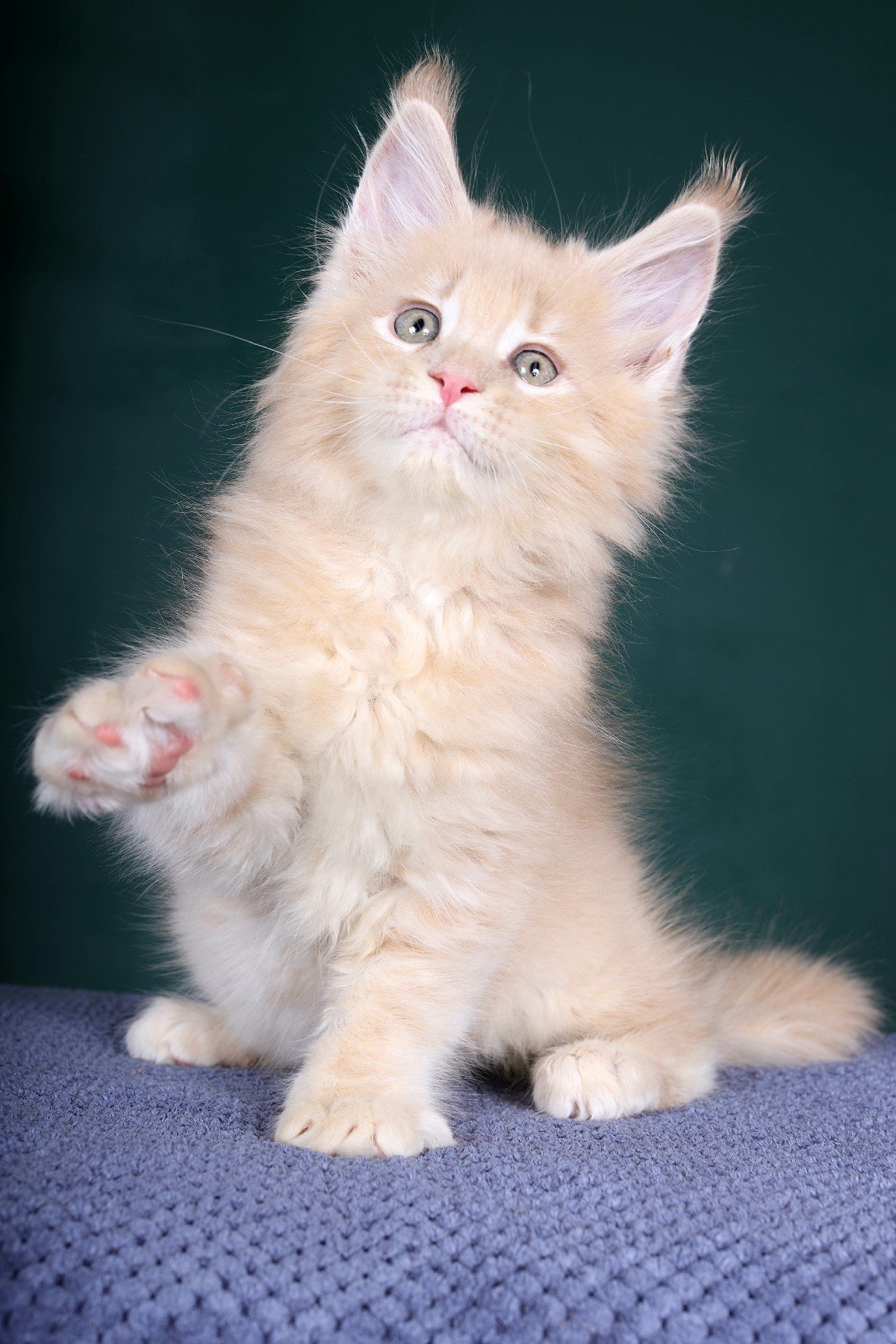
Can a Maine Coon Have Short Hair?
Maine Coons are well known for their beautiful, long fur. Some of them can actually have short hair because of genetic reasons. These features are determined by certain genes responsible for hair length. Inheritance patterns, including dominant and recessive genes, come into play.
Breeding practices impact the likelihood of short-haired kittens being produced, as breeders can choose to breed for specific genetic traits.
1. Genetic Possibilities for Short Hair
Due to the genetic diversity present among Maine Coons, short hair is a possibility. The genetic mechanisms behind hair length are complex, and it’s entirely possible for some kittens in a litter to inherit shorter hair traits.
Breeding practices can increase this chance by mating cats that share genetic markers. Here are some genetic traits associated with short hair:
- Dominant genes tend to produce short hair
- Recessive genes contribute to longer hair
- Mixed genetic backgrounds can result in diverse hair lengths
2. Influence of Mixed Breeding
If you want to crossbreed Maine Coons to have short-haired kittens, you can breed them with American Shorthairs. This practice creates a genetic mixing pot, sometimes producing coats that are shorter.
Though this adds to the uniqueness of Maine Coons’ appearances, it can make it tricky to predict their coat length. Popular mixes include:
- Maine Coon and American Shorthair
- Maine Coon and Siamese
- Maine Coon and British Shorthair
3. Health Conditions Affecting Fur Length
Length of fur can be impacted by certain health issues. Conditions such as hormonal imbalances or skin infections can lead to atypical fur development or loss.
Routine veterinary examinations are important to maintain coat quality. Common conditions affecting fur length include:
- Hyperthyroidism
- Skin infections
- Alopecia
4. Grooming Techniques for Shorter Hair
Short-haired Maine Coons require a different grooming routine. They need less grooming than their long-haired brethren, which makes them easier to take care of.
Choose the proper tools, like soft-bristled brushes, to ensure their coats stay healthy and shiny. Short-haired Maine Coons are less prone to mats and tangles, making them easier to care for.
5. Stress and Overgrooming Impact
Stress can cause a cat to overgroom, causing them to lose fur. Behavioral signs such as excessive licking or biting of fur show that the cat is stressed.
Lowering stress with playtime and a peaceful habitat helps fur stay healthy. Strategies to alleviate stress include:
- Providing interactive toys
- Establishing a routine
- Creating a quiet space

Mixed Breed Characteristics
Mixed breed Maine Coons make wonderful feline companions and add their own special touch. These cats frequently exhibit a wonderful mix of characteristics from their Maine Coon heritage and their other ancestry. Unlike their purebred siblings, mixed breed Maine Coons provide an amazing range of diversity in looks and personalities.
Take their coats, for example, they can be completely different. Some mixed breeds even inherit the signature long, bushy tail and tufted ears of a classic Maine Coon. Some will even catch you off guard with a short-haired coat, showcasing the mix of many colorful and wonderful feline genes. This combination can create a variety of fur lengths and textures, making each cat a one-of-a-kind artwork.
Mixed breed cats have the most diverse looks you’re likely to find. Here’s what they look like in each state – you can get a sense of the variability in their size. Some of these cats become as large as a purebred Maine Coon, reaching weights of 18 pounds or more, while others remain small.
Color patterns are equally varied, with mixed breeding bringing in new, exciting combinations that make them look even more stunning. If a kitten inherits the right versions of these genes, it will grow up to have distinctive features such as a short-haired coat. This contributes to the delightful surprise of these felines. About 30% of Maine Coon kittens will grow up to have a short-haired coat, illustrating this type of genetic diversity.
Physical Traits of Mixed Breeds
Mixed breed Maine Coons will vary widely in both size and coat length. While some may resemble the larger end of a purebred, others could be petite, demonstrating the variability in genetics. The coat can vary from the classic long, flowing fur to a more modern, sleeker appearance.
Mixed breeding usually brings in different colour patterns and textures. A short-haired Maine Coon would begin with that same soft, fine undercoat. This undercoat is at first short and thin, until the protective top coat comes in, often taking until 3 to 4 years of age to reach its full splendor.
Behavioral Tendencies and Social Nature
Behavior-wise, mixed breed Maine Coons are famously friendly. They are usually friendly dogs, often taking on an easy-going temperament from each of their parent breeds. Often these kitties are the social butterflies of the bunch, getting along well with humans and other animals.
To set them up for successful interactions, it’s important to get puppies used to new places and playmates slowly and safely. This practice encourages comfort, confidence, and familiarity in socialized spaces.
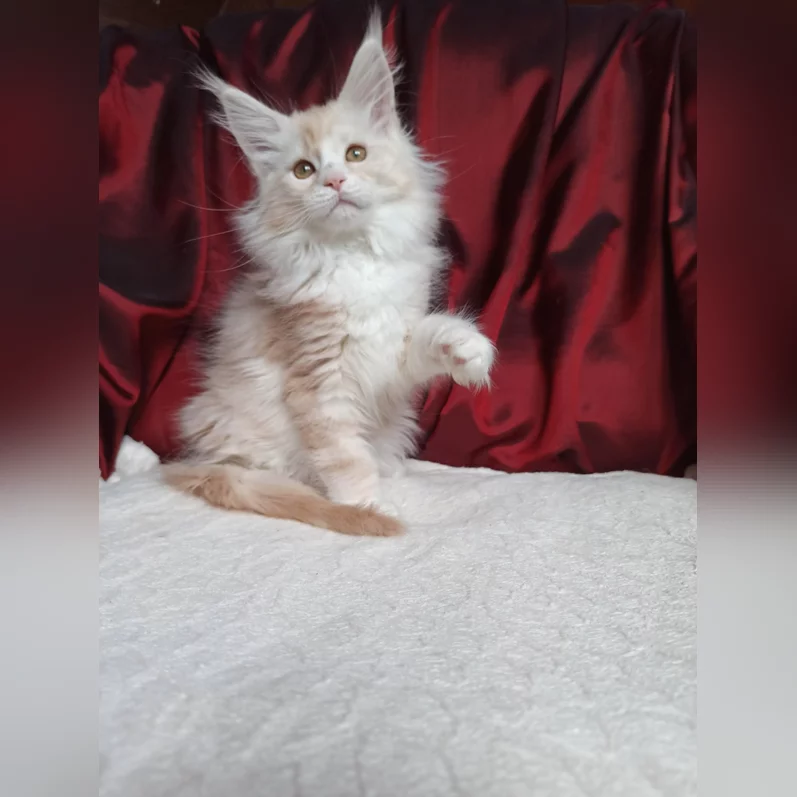
Care Needs for Mixed Breeds
Whether your mixed breed Maine Coon is purebred or not, you’ll want to pay attention to their diet and exercise. They require regular veterinary visits to keep them healthy.
Here’s a quick list of care tips:
- Feed an appropriate diet for their size and activity level.
- Ensure they get regular exercise to stay fit.
- Schedule routine vet check-ups to prevent health issues.
Health and Grooming Practices
Nutritional Needs for Healthy Coats
Proper nutrition is fundamental to keeping the long, luxurious coat that Maine Coons are famous for. A well-balanced diet with necessary vitamins and minerals provides healthy fur growth and maintains healthy skin. Other omega fatty acids, including omega-3 fatty acids and omega-6 fatty acids, are important nutrients that help keep your coat looking its best by locking in moisture and shine.
Plus, vitamins A and E supercharge skin health. High-protein diets are especially vital to these felines because protein is essential to hair growth and repair. Including high-quality protein sources in Maine Coons’ diets will go a long way in improving their coat condition. For optimal results, concentrate on chicken, turkey, and fish.
- Salmon, for those healthy omega-3s
- Chicken, a healthy alternative to red meat
- Tuna, source of long-chain polyunsaturated fatty acids
- Eggs, supplying biotin to ensure healthy fur
Regular Grooming Routines
Daily grooming is important for Maine Coons in order to avoid matting and keep skin healthy. Their heavy, double coats need little grooming compared to other breeds. With weekly brushing, you can help them look their very best.
If your kitty has long hair or is prone to mats, groom daily, or at least three times a week. This will ensure that you’re removing as much dead fur and dander as possible. Gentle brushing techniques, with soft strokes and rotating brush areas, avoid skin irritation.
Creating a good grooming practice can help ensure that this process is a pleasant experience for both cat and cat parent. Begin with brief sessions and then work up to longer periods as your cat gets used to it.
Identifying Health Issues Early
Monitoring the condition of a Maine Coon’s fur is an effective way to gauge their overall health. Mats can form quickly, especially in long-haired breeds, leading to skin irritation or infections. Signs of potential health issues include excessive shedding, patchy fur, or changes in coat texture.
Cats struggling with weight issues or arthritis may find grooming challenging, making regular checks even more vital. A simple checklist can help owners spot issues early:
- Check for unusual bald spots
- Look for signs of irritation or redness
- Note any changes in fur texture or shine
